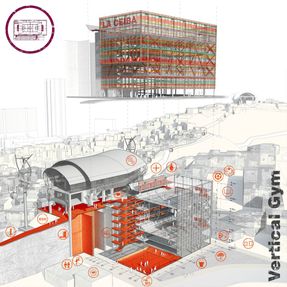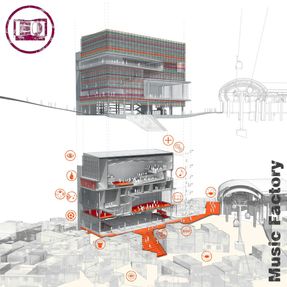Metro Cable Caracas
ARCEHITECTS
Urban-Think Tank
LOCATION
Caracas, Venezuela
CONSTRUCTION
constructora norberto odebrecht s.a. (cno) (supervisión metro de caracas)
CONSULTANTS
felix caraballo (manejo de comunidades); intégral ruedi baur & associés: ruedi baur (diseño gráfico)
ENGINEERING
dac: deleida alvarez (proyecto, coordinación), carlos silva (supervisión del sitio y proyecto); doppelmayr seilbahnen gmbh: martin schöffel (sistema de cableo interurbano) representative of doppelmayr in venezuela; eduardo lopez (diseño estructural); robert silman associates: pat arnett (diseño conceptual estructural)
PROJECT TEAM
josé antonio nuñez, carlos bastidas, alfredo brillembourg, patrick edlinger, elizabeth florian, cesar gavidia, dora kelle, hubert klumpner, rafael machado, claudia ochoa, regina orvañanos, juan ponce, matt tarczynski
RESEARCH TEAM
michael contento, lindsey sherman
CLIENT
c.a. metro de caracas
LANDSCAPE
topotek 1: martin rein-cano, christian bohne
PHOTOGRAPRHS
Iwan Baan
CATEGORY
Transportation
DESIGN TEAM
Alfredo Brillembourg and Hubert Klumpner
LANDSCAPE
Topotek 1: Martin Rein-Cano, Christian Bohne
The first stage of this project involves a radical new approach in urban design and planning.
Our extensive experience working in neighborhoods and with community leaders contrary to being naive, these communities are often well informed with expertise learned in the field on the principles of planning and development.
In this sense the approach to the project includes the following:
- A symposium and presentation made at the Central University of Venezuela, attended by architects, planners and other experts in the area, activists and community leaders who criticized the plan presented by the government.
- The creation of a working group from Urban Think Tank with residents of Barrio San Agustin and volunteers in order to explore alternatives.
- Selection of the cable car system with the workforce. The decision was made based on the best potential alternative, according to the terrain, minimal invasion of the existing urban fabric, high sustainability and flexibility.
- One day of intensive community work conducted by the group to redefine and refine design concepts.
- Analysis, planning, media outreach campaign and presentations, were needed to build the support and financing of the project.
The Metro Cable car system is integrated with the Caracas Metro system. It has a length of 2.1 km and uses as transportation a funicular system with a capacity of 8 passengers each. The total system capacity is estimated at about 1,200 people per hour in each direction.
Two of the stations are located in the valley itself and serve as connections with the public transport system of the capital.
The 3 additional stations will be located on the mountain, along the route in plots that concentrate fundamental community needs such as: accessibility, adequate pedestrian circulation patterns and constructive sustainability. All this under criteria of minimum expropriation and demolition of existing houses.
The 5 stations of the Metro Cable system, have a number of common fundamental basic components, which are: level platform, access ramps, well defined circulation patterns, materials and structural elements. However, each station differs in its configuration and additional functions. Each station includes cultural and social spaces as well as administrative space. The construction of public spaces, a vertical gym, a supermarket and a nursery are also planned.
The key criteria underlying the award of the Urban Think Tank to the working group for the Urban Metro Cable project was the subject on which the problem arose in the first place, what kind of city we want to see in 2025. Only focusing on anticipating the capacity of the system, for example, made no sense.
For the design of the project we took into account the lessons learned from project for the Long Island Expressway in New York, which was already obsolete before construction was completed.
We can't build "for tomorrow", but we should instead design so as to be able to build "tomorrow." Furthermore taking into account the changes in the informal city, which are not only extremely fast but exceptionally transformative.
On the other hand, the goal we pursued was to implement the means for change in relation to the fundamental needs of Barrio San Agustin, which its inhabitants identified as:
- Safe access to public transport for residents of the neighborhood.
- The development of employment opportunities for the economy of the neighborhood.
-The development of sustainable infrastructure to give permanence and stability to the community.
- Improvements in health, education, employment opportunities and quality of life for the residents of San Agustin.
- Safety and crime reduction.
We are waiting for the year 2025 or before with two individual aspirations: First, that the transport scheme of San Agustin is transferred to other neighborhoods of Caracas and eventually affect the physical, economic and cultural development of the formal and informal city.
And second, that the strengthening of the organization of neighborhood communities perpetuate and develop with more influence by giving them control of their own destiny.






















